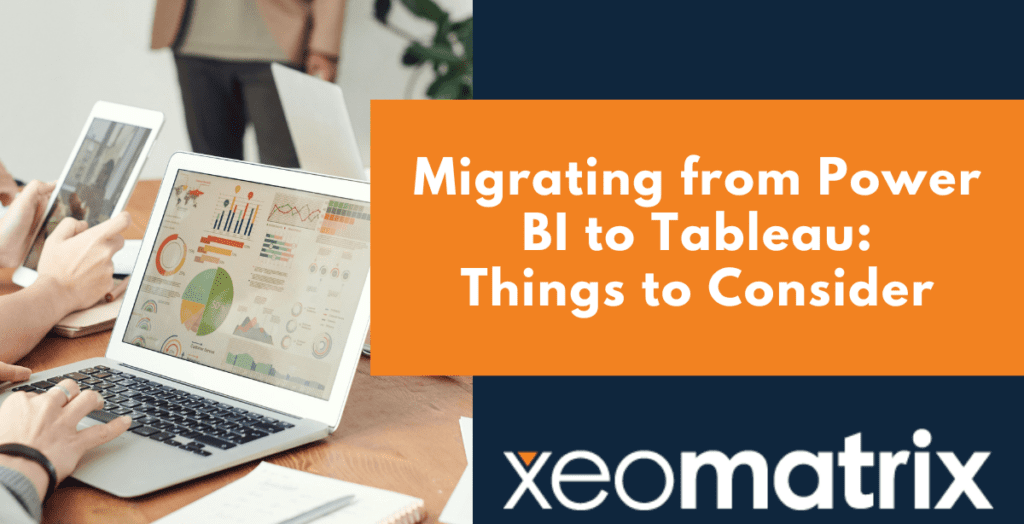Migrating from Power BI to Tableau represents a pivotal shift for businesses seeking to leverage the most advanced tools in data visualization and analysis. This guide provides a comprehensive roadmap for organizations contemplating this significant transition.
Overview of Power BI and Tableau
Power BI, a Microsoft product, is known for its integration with the Microsoft ecosystem, offering initial cost advantages with free licenses in certain scenarios. It caters to data analytics needs with a focus on business intelligence platforms, leveraging DAX (Data Analysis Expressions) for custom data models and measures. However, its low upfront costs can increase as scalability, collaboration, and more sophisticated deployments demand significant investment in resources and infrastructure.
Tableau, now under the Salesforce umbrella, is celebrated for its user-friendly interface, flexibility, and robust community support. It stands out with its ease of use, powerful data visualization capabilities, and the ability to integrate seamlessly with Salesforce, making it an attractive option, especially for businesses already using Salesforce products.
The allure of Power BI often begins with cost efficiency. Yet, businesses soon encounter the complexities and costs associated with scaling, collaboration, and infrastructure needs. Tableau’s market leadership in analytics, coupled with its ease of learning and extensive community support, presents a compelling case for migration. Its user-friendly approach, coupled with advanced features and a polished aesthetic, contrasts with the more cumbersome and less intuitive nature of Power BI deployments.
Pre-Migration Considerations
Assessing Power BI Setups
A thorough assessment of the current Power BI implementation helps identify which components (data models, reports, dashboards) are essential for migration. This step is crucial for streamlining the process and focusing efforts on high-value elements.
An object inventory assessment can reveal that 60-80% of existing items may not require migration, streamlining the process.
Understanding Migration Scope
The scope encompasses all aspects of the migration, from data and dashboards to user permissions and integrations. Understanding this scope is vital for setting realistic expectations and planning effectively.
Identifying Challenges
Common challenges include the technical differences between Power BI and Tableau, such as data modeling and calculation languages (DAX in Power BI vs. Tableau’s calculation language). Preparing for these challenges involves strategic planning and might require specialized Tableau training.
Executing the Migration from Power BI to Tableau
Developing a strategic migration plan involves setting a clear timeline, allocating necessary resources, and ensuring robust communication with stakeholders. Training plays a crucial role in smoothing the transition, with tailored programs that familiarize teams with Tableau’s capabilities using their data, enhancing the learning experience.
Migrating Data and Reports
A methodical approach to migrating data ensures integrity and security. It’s essential to validate all data sources and reports during the transition, paying close attention to custom calculations and business logic previously implemented in Power BI.
Best Practices for Dashboard Translation
Recreating Power BI dashboards in Tableau offers an opportunity to leverage Tableau’s advanced visualization capabilities. Rather than a direct replication, consider how Tableau’s features can meet or enhance each dashboard’s objectives.
Post-Migration: Optimization and Adoption
After migration, the focus shifts to maximizing the benefits of Tableau. This includes:
- Customizing Tableau Features: Tailor Tableau’s features to meet your unique business needs, exploring advanced analytics, AI capabilities, and interactive dashboards.
- Fostering Adoption: Beyond technical training, promoting a culture of data literacy and exploration can enhance team members’ comfort with and utilization of Tableau.
- Performance Monitoring: Regularly review the performance and scalability of your Tableau setup to ensure it continues to meet your business needs efficiently.
Expert Help Migrating from Power BI to Tableau Solutions
Migrating from Power BI to Tableau is a significant but worthwhile endeavor for businesses looking to enhance their data analytics capabilities. By following a structured approach to migration—covering pre-migration considerations, planning, execution, and post-migration optimization—you can ensure a successful transition.
About XeoMatrix
At XeoMatrix, we specialize in making this journey as seamless as possible, providing expert guidance and support every step of the way.
With a deep understanding of both Power BI and Tableau, as well as other leading BI software, we can provide you with comprehensive insights into their key aspects, strengths, and weaknesses. Our team of data specialists will work closely with your organization to understand your unique requirements, challenges, and goals, enabling us to tailor our recommendations to best suit your needs.
Need help migrating from Power BI to Tableau? Contact Us.
